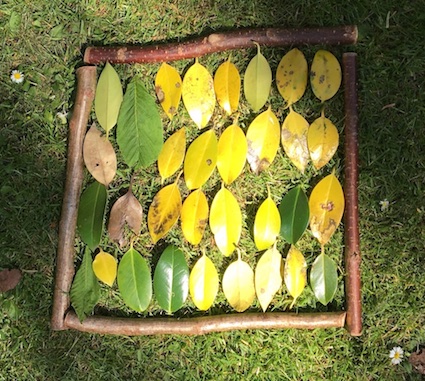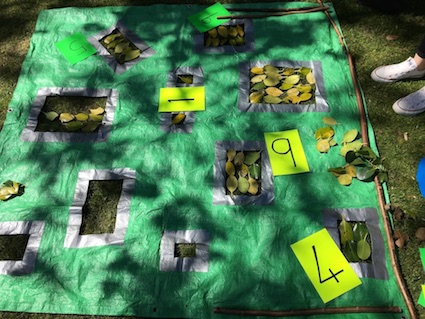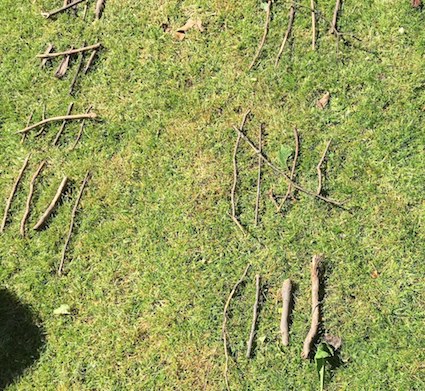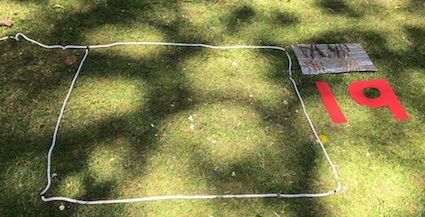One of the most memorable outdoor learning in-set training sessions I undertook was at Tyntesfield Primary. It was a lovely day and I was made to feel very welcome. They came up with the following very simple maths investigations which demonstrate nicely how teachers can use their skills, knowledge and experience to work outside. May of them would work for different age ranges and be a lovely way to celebrate Outdoor Classroom Day.

When asking children to undertake a maths investigation, once I have shown them the range of resources I have, I tend to leave it up to them to decide what to use to present their findings.

What is our favourite season of the year? Often children will come up with this sort of challenge on their own and enjoy creating pie charts. I’ve seen some great pie chart games over the years.
This is presented using a simple “mud pie chart” created through a small group survey. The white calico cotton is a tens frame. The ‘mud pie chart’ made from Sid the Stripy One-Metre Rope Snake. He’s a cousin of Sammy the One-Metre Rope Snake.

How many leaves will this frame hold?? What is the best way of laying the leaves to pack the most in? Does the size or shape of the leaf affect the number it can hold?

How many leaves do you think each oblong will hold? Estimate then find out. The group used the maths tarp as it provides a useful workspace for several children. Look how clearly fluorescent cards stand out in a natural space. I’ve had these for years – sets of 0-9 cards in green, pink, orange and yellow.

How many sticks can your group collect in one minute? What is an effective way of presenting them for quickly counting?

How many daisies can you find within one square metre?
- Tagged rope was used to create the metre square. White braided polypropelene rope from a DIY shop tagged with electrical tape.
- Tally sticks are sitting on a “space mat” – useful for sitting outside.
- Silicone numbers – part of a TTS outdoor number pack.
This blog post was originally published in May 2017.





























